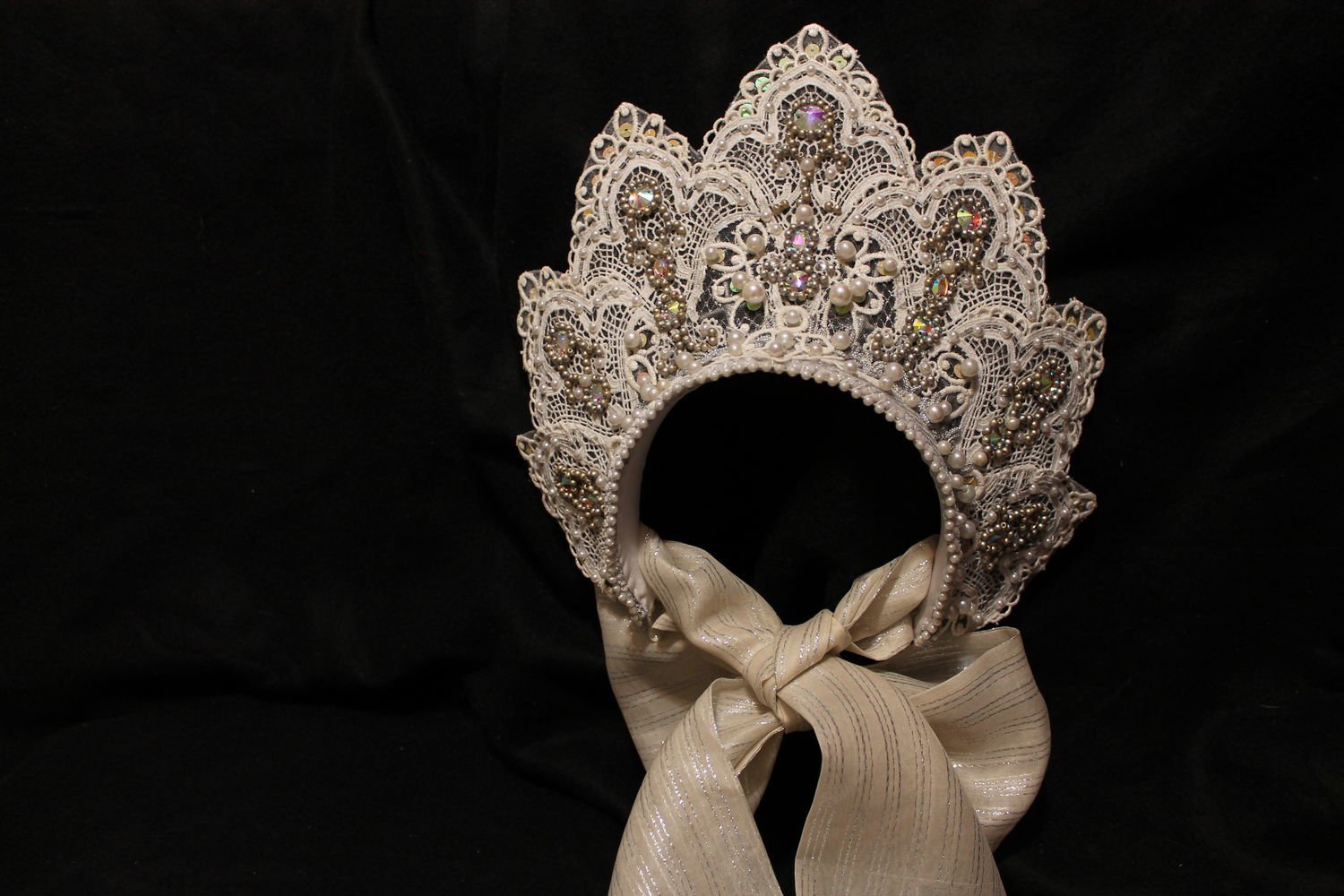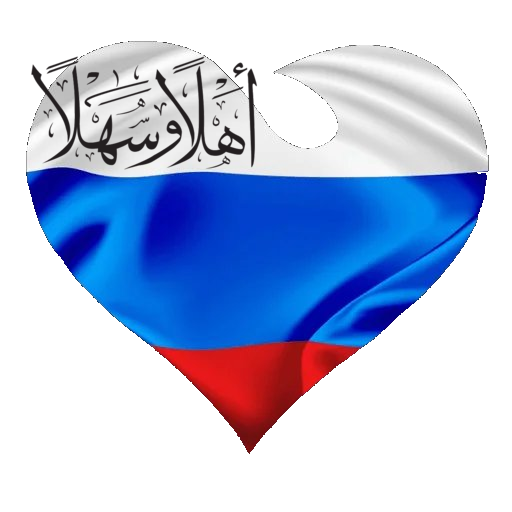The Russian kokoshnik is an ancient female headdress, a symbol of the Russian national costume. Its name originates from the old Russian word “kokosh” (“chicken”, “hen”). They were worn only by married women: for a long time it was believed that after getting married, it is necessary to cover the head and hide the hair.
Forms composition of the Russian kokoshnik
There were many forms of kokoshnik, but now the most famous is the form of a cap with a flat or convex bottom, to which a high ridge in the form of a triangle or crescent was attached.
The base of such a comb was made of thick paper or glued canvas, covered with expensive fabric, velvet or damask, decorated with braid, brocade applications, embroidered with gold or silver threads, beads or pearls, and sometimes with precious stones.
Sometimes a piece of cloth was worn over kokoshniks, fastened under the chin. It could be the thinnest veil, a thick shawl, decorated with embroidery..
The history of the kokoshnik
It is not known exactly when kokoshniks began to be worn, however, beginning in the 10th century, old Russian women wore headdresses resembling them.
Over time, the kokoshnik became an integral part of the Russian costume. The word “kokoshnik” itself first appeared in documents of the 17th century.
At first, women of all strata of the population wore them, but after the reforms of Peter I, Russian kokoshniks were worn only with the traditional dress of the wives of peasants, petty bourgeois and merchants.
This special headdress was made by special craftswomen, they were called “kokoshnitsy”. Even in poor families, they sought to acquire an elegant headdress, which was carefully passed down from generation to generation.
In everyday life, kokoshniks were not worn, reserving them for special occasions. The Russian festive costume made the female figure majestic, massive, and a large elegant kokoshnik appropriately crowned this image.
Unmarried girls also wore high headdresses, the so-called crowns, but they did not cover their hair. Subsequently, they began to call kokoshniks any jewelry with a high “ocheliem” (Slavic diadem that is put on the forehead) and stopped correlating them with family status.
The Russian kokoshnik and royalty:
The kokoshnik penetrated into the court costume. Even Catherine II, emphasizing her closeness to the Russian people, gladly posed for portraits and encouraged courtesans to appear in kokoshniks and masquerades.
The famous Russian memoirist Philip Vigel recalled how, during the Patriotic War of 1812, many patriotic ladies “dressed up in summer, put on kokoshniks and headbands; looking in the mirror, they found that this outfit suited them very elegant”.
In 1834, Nicholas I presented a female court uniform in the form of a dress in the Russian style and a corresponding headdress: for married ladies – a kokoshnik, for unmarried ladies – a “headband” (the above-mentioned crown).
Each rank, from maid of honor to lady of state, had its own uniform color and decoration.
The French traveler, the Marquis de Custine, in his travel notes “Russia in 1839”, described the kokoshnik as follows:
“The national costume of Russian court ladies is impressive and at the same time old-fashioned. Her head is crowned with a headdress that looks like some kind of fortress wall made of richly decorated cloth or a low men’s hat without a base. This crown, several inches high, embroidered, as a rule, with precious stones, pleasantly frames the face, leaving the forehead open; original and noble, it is very beautiful, but it irreparably hurts ugly women.”
Alexander III’s wife, Empress Maria Feodorovna, had a delightfully beautiful diamond tiara in the form of a kokoshnik. Her sister Alexandra, future wife of British King Edward VII, commissioned one of hers for herself, and thus the fashion for precious kokoshniks arose.
Alexandra of Denmark’s tiara is still kept in Elizabeth II’s jewelery collection, and is called the “Russian kokoshnik tiara”.
Russia, country of the best gifts
The Russian kokoshnik can be a good gift when traveling to Russia, with our guides in Tours in Russia we will take you without fail to get the best gifts and enjoy the best excursions.



